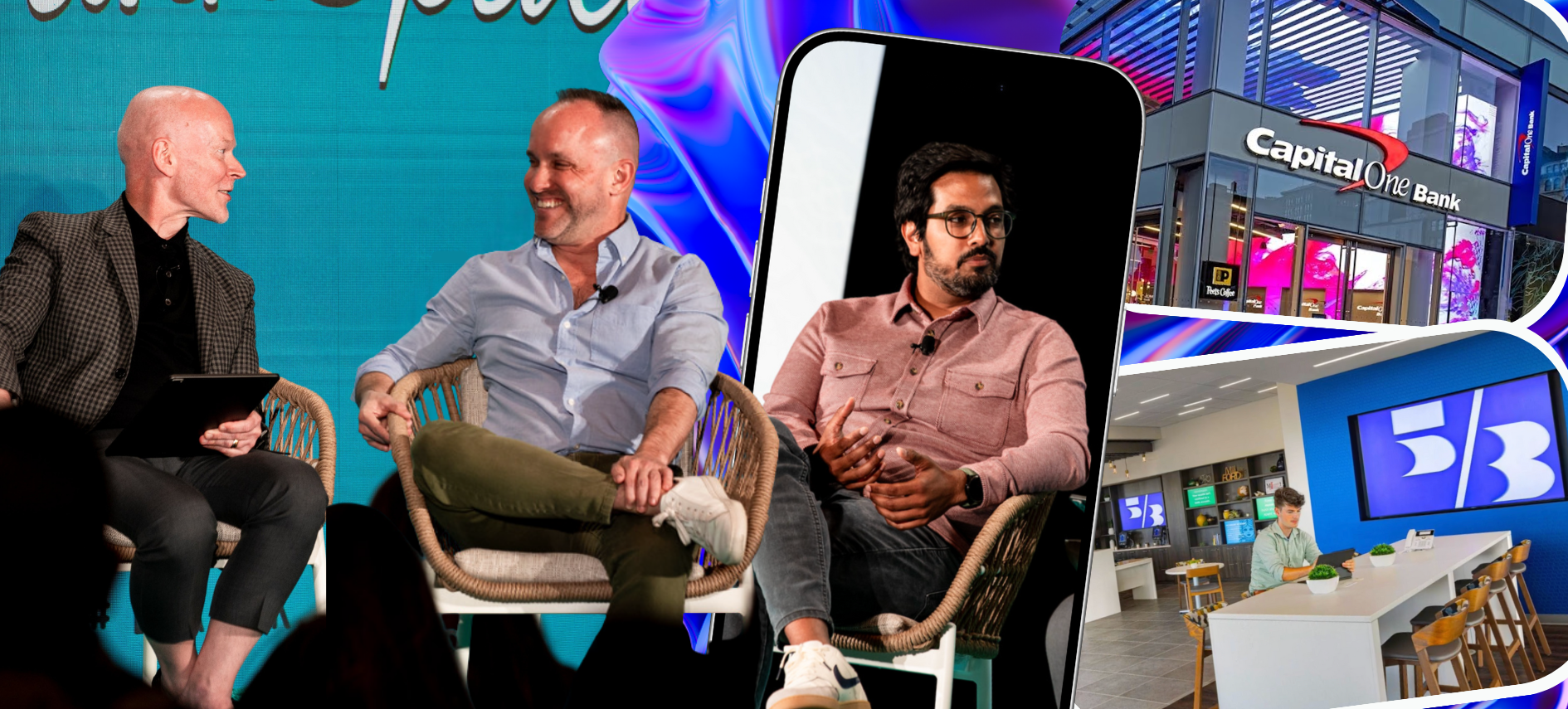Helen Herrick, Principal at MBH Architects and leader of the firm's New York City office, brings a unique perspective to bank branch design.
With an extensive background in both store and bank design, having worked for notable brands such as Gap, Ann Taylor, and CapitalOne, Herrick understands the importance of creating spaces that prioritize the customer experience.
A featured speaker at the upcoming BankSpaces retreat, we caught up with Herrick to get her take on a number of topics. She emphasized the need for bank branches to alleviate the stress and anxiety often associated with financial matters, ensuring that customers can easily accomplish their goals without facing unnecessary hurdles.
Herrick's approach to branch design focuses on understanding the evolving needs of customers. By combining her store design expertise with a deep understanding of customer behavior, Herrick and her team at MBH strive to design branches that are not only efficient, but are also welcoming and supportive of customers' financial journeys.
"What gets me very excited about banking is that it is so much about the customer,” she said. “They can do everything online or at an ATM. But they have decided to come into a branch. So let’s make it easier for them to do what they need to do."
How might branches evolve over the next decade?
Herrick: Customer behavior will ultimately dictate how bank branches evolve. As long as customers continue visiting branches for specific transactions, and traditional banking accounts and cash usage persist, I don't think branches will change drastically in the next 10 years. However, there will be a shift towards enhancing efficiency and focusing on aspects of banking that customers prefer to handle in person.
As more people engage with banking through apps and ATMs, technological features within branches should be focused on helping address customers' specific needs. Rather than installing technology and hoping for adoption, it should integrate smoothly to create a convenient, frictionless experience for customers.
Design is key to encouraging new customer behavior. However, banks shouldn't try to shift customer behavior too drastically. I've seen many banks attempt to change customer behavior, only to end up with underutilized screens, computers, desks, and other resources. By truly listening to customers and staff, banks can better configure their spaces for maximum efficiency and relevance.
For branch transformation leaders with limited budgets, what design elements provide the most impact?
Herrick: Every branch designer would love to have a big budget to renovate every branch, especially after acquisitions. Several years ago, I was working with a client who was a green and yellow bank, and they bought a red, white, and blue bank.
Signage should be the first priority. You change that. Now you've got your green and yellow sign, but your chairs are blue, and the carpet is red. Where do you go from here? You need to get comfortable with the idea that your branches will evolve over time.
We advise clients to closely coordinate design plans with their maintenance and renovation teams to ensure alignment. It's important to know your end goal and be firm about it. Although it may cause anxiety, in the long run, it will ultimately result in a better-renovated branch.
What are two or three design elements that advance the customer experience?
Herrick: Customer flow is crucial. If a customer encounters obstacles in completing tasks that you haven’t designed for, you can have issues. For example, if you aim to reduce teller usage by locating them in a back corner with insufficient queuing space, people will still default to the teller line. Now you've got customers queuing in front of your banker offices, causing issues with noise, eavesdropping, and confidentiality.
Be honest about where the customer is right now. As mentioned before, you can't force a 90-degree shift, but thoughtful design can gently nudge them 15 degrees in the right direction.
Designers must also be in tune with the frontline operations staff. These employees deeply understand customer preferences and what's needed for their efficient work.
It's nuanced, particularly when accommodating longstanding staff preferences. You have to help them along, but at the same time, their deep understanding of what the customers want is crucial. If a conference room has been converted to a private office because "customers won't talk at those open tables in the middle of the branch," listen to that feedback.
What design trends do you see on the horizon for retail banking?
Herrick: The hospitality trend, which CapitalOne and many others have adopted, involves bringing in other amenities to get people across the threshold. This is still very prevalent. Additionally, there's a focus on the efficiency of branches and getting better at determining what is necessary and what is not. Another trend is that there's no one-size-fits-all approach. There will be big branches and little branches, but consistent branding throughout is essential, especially for the big banks.
Branding is everything, as customers are not as tied to their location anymore. Branding is so crucial to attracting new customers and gaining recognition.
Branding and design must go hand in hand, and it should be clear to the customer: where they're going, how they move through the branch, and how to do what they want. The design should never get in the way of the branding, and the branding shouldn’t get in the way of the design. While this may seem super obvious, sometimes it doesn't happen.
How can bank leaders effectively unite design and branding for cohesive physical branches?
Herrick: Effective communication and a shared understanding of the desired physical space are key. To tie it back to retail designers moving into the banking space, your job is to sell the merchandise. Bonus points if it's a beautiful store, but ultimately, the goal is to have merchandise purchased and out the door.
For banks, the key is attracting customers. As fabulous as the design may be, the focus should be on branding and customer attraction. Designers absolutely need to create beautiful spaces, but they need to balance that with exterior signage and interior messaging.
Working closely with branding and customer service is crucial. In retail, the designer has to let go of their ego a little bit, but I think in banking, it's to an even greater degree because those two things — branding and customer service — are what will drive sales for each branch.
Posted by
Branching into Tomorrow – Together.
Exploring the Future of Bank Branch Design + Technology
April 19-21, 2026 | Bonita Springs, FL




-Dec-04-2025-03-32-25-8096-PM.png)
-1.png)




Comments